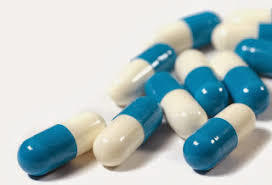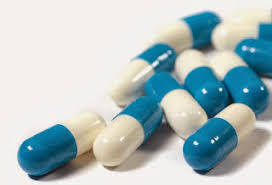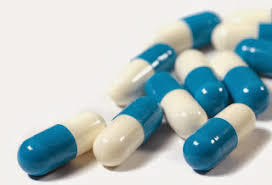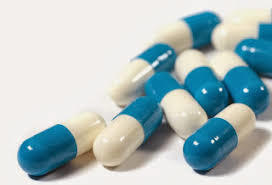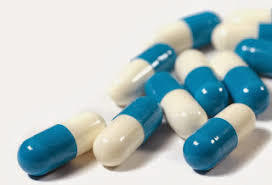
Clindamycin Phosphate, Clotrimazole and Tinidazole Soft Gelatin Capsules
71 INR/Box
Product Details:
- Drug Type General Medicines
- Ingredients Clindamycin Phosphate
- Physical Form Capsules
- Suitable For Adults
- Storage Instructions Cool and Dry Place
- Click to view more
X
Clindamycin Phosphate, Clotrimazole and Tinidazole Soft Gelatin Capsules Price And Quantity
- 71 INR/Box
- 300 Box
Clindamycin Phosphate, Clotrimazole and Tinidazole Soft Gelatin Capsules Product Specifications
- Cool and Dry Place
- Clindamycin Phosphate
- General Medicines
- Capsules
- Adults
Clindamycin Phosphate, Clotrimazole and Tinidazole Soft Gelatin Capsules Trade Information
- Cash in Advance (CID) Cash Advance (CA)
- 300 Box Per Month
- 1 Months
- Yes
- Sample costs shipping and taxes has to be paid by the buyer
- Western Europe Australia South America Eastern Europe Middle East Central America Asia North America Africa
- All India
Product Description
This medication is used to treat vaginal yeast infections. Clotrimazole reduces vaginal burning, itching, and discharge that may occur with this condition. This medication is an azole antifungal. It works by stopping the growth of yeast (fungus) that causes the infection. The vaginal product comes in 2 forms (a vaginal cream or tablet). Some products come with a skin cream to be applied to the area around the outside of the vagina.Indications:
Treatment of vaginal infections
Vaginal mycoses secondarily infected with bacteria
Vaginal and vulvo-vaginal infections
Pharmacology:
Pharmacodynamic Properties Of Clindamycin Phosphate
Clindamycin is a lincosamide antibiotic with a primarily bacteriostatic action against Gram-positive aerobes and a wide range of anaerobic bacteria. Lincosamides such as clindamycin bind to the 50S subunit of the bacterial ribosome similarly to macrolides such as erythromycin and inhibit the early stages of protein synthesis. The action of clindamycin is predominantly bacteriostatic although high concentrations may be slowly bactericidal against sensitive strains.
Pharmacokinetic Properties Of Clindamycin Phosphate
- Absorption:
Rapidly absorbed after oral administration with peak serum concentrations observed after about 45 minutes. Absorption of an oral dose is virtually complete (90%) and the concomitant intake of food does not appreciably modify the serum concentrations; serum levels have been uniform and predictable from person to person and dose to dose. Clindamycin does not penetrate the blood brain barrier. - Protein Binding:
92-94% - Metabolism:
Hepatic. - Route Of Elimination:
Approximately 10% of the bioactivity is excreted in the urine and 3.6% in the feces; the remainder is excreted as bioinactive metabolites.
Clotrimazole, the broad spectrum antifungal acts by inhibiting ergosterol synthesis. Cell membranes of fungi and protozoa are made of ergosterol, inhibition of its synthesis leads to impairment of cytosplasmic membrane. Clotrimazole is known to have activity against dermatophytes, moulds and yeasts. In addition to its antifungal action, it also acts on gram-positive bacteria (Streptococci /Staphylococci / Gardnerella vaginalis), and gram-negative bacteria. Depending on the concentration of clotrimazole at the site of action, it exhibits fungi static and fungicidal activity.
Pharmacokinetic Properties of Clotrimazole
Pharmacokinetic studies after vaginal application of clotrimazole have shown that only a small amount of drug (3-10%) is absorbed. Clotrimazole undergoes rapid hepatic metabolism into inactive metabolites and the resulting peak plasma concentrations of Clotrimazole-500mg given via vaginal route were found to be less than 10ng/ml. From these findings it is inferred that Clotrimazole given via vaginal route is unlikely to show systemic side effects.
Pharmacodynamic Properties of Tinidazole
Tinidazole is a prodrug and antiprotozoal agent. The nitro group of tinidazole is reduced in Trichomonas by a ferredoxin-mediated electron transport system. The free nitro radical generated as a result of this reduction is believed to be responsible for the antiprotozoal activity. It is suggested that the toxic free radicals covalently bind to DNA, causing DNA damage and leading to cell death. The mechanism by which tinidazole exhibits activity against Giardia and Entamoeba species is not known, though it is probably similar.
Pharmacokinetic Properties of Tinidazole
- Absorption:
Rapidly and completely absorbed under fasting conditions. Administration with food results in a delay in Tmax of approximately 2 hours and a decline in Cmax of approximately 10% - Distribution:
Tinidazole is distributed into virtually all tissues and body fluids and also crosses the blood-brain barrier. The apparent volume of distribution is about 50 liters. Plasma protein binding of tinidazole is 12%. Tinidazole crosses the placental barrier and is secreted in breast milk. - Protein Binding:
Plasma protein binding of tinidazole is 12%. - Metabolism:
Hepatic, mainly via CYP3A4. Tinidazole, like metronidazole, is significantly metabolized in humans prior to excretion. Tinidazole is partly metabolized by oxidation, hydroxylation and conjugation. Tinidazole is the major drug-related constituent in plasma after human treatment, along with a small amount of the 2-hydroxymethyl metabolite. - Route Of Elimination:
Tinidazole is excreted by the liver and the kidneys. Tinidazole is excreted in the urine mainly as unchanged drug.
Pregnant & Lactating
Although, our product is safe to use but pregnant and lactating women should take this medication under the supervision of the physician.
Contraindications
Blood dyscrasias
Decreased neutrophils
Epileptic seizure
First trimester of pregnancy
Hypersensitivity
Side Effects
Very rare but the common side effects are:
Anorexia
Bitter taste
Nausea
Vomiting
Diarrhoea
Fatigue
Dry mouth
Abdominal distress
Headache
Tell us about your requirement

Price:
Quantity
Select Unit
- 50
- 100
- 200
- 250
- 500
- 1000+
Additional detail
Mobile number
Email


